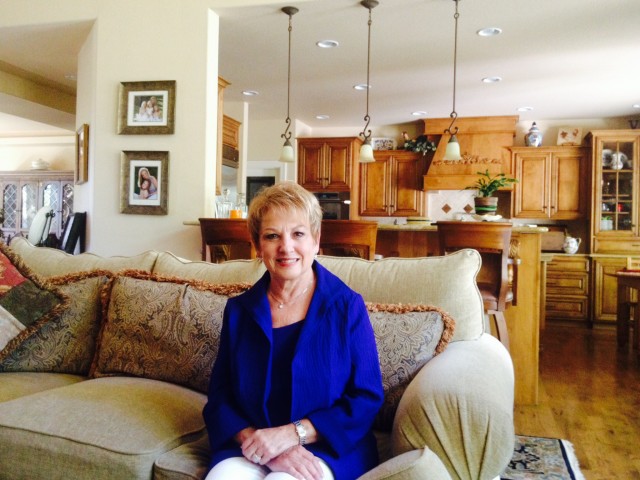“There’s nothing,” she says. “You cannot find anything.”
Macri would have had to travel to a regional state office in Southern California and request paper copies of these reports. But from her home in Oregon, California’s website proved useless.
“I was dumbfounded at the fact that there were no methods to see if there were any reasons that I would not want to put my mom in any of these facilities,” she says.
She says the lack of meaningful information made an already difficult decision even more painful.
“You’re placing this individual that you love in a situation where you can only hope and pray that they’re going to be safe, secure, and well cared for."
About a dozen states in the U.S. -- including North Carolina, Florida and Ohio -- make details about facility violations readily available online. California lawmakers say it’s an embarrassment that a state with the technical genius of Silicon Valley is so far behind.
At a press conference in January, Assemblymember Susan Eggman (D-Stockton) introduced a bill, AB 1571, that would require the state to build an online rating system where consumers can compare facilities on quality.
“We should not depend on Yelp when a loved one needs help,” she said.
The bill is one of several proposed assisted living reforms currently pending at the State Capital. Lawmakers will vote on it this month, but it’s unclear if they –- or the governor –- will sign off on the million-dollar price tag.
“I don’t see how we afford not to do this,” Eggman says, though she conceded that the political will to back technology projects is lacking. “There’s always more needs than there is money. And the state’s encountered budget problems for awhile now. So upgrading technology is not at the top of anyone’s list.”
Prior Attempt 'Mind-blowingly Bad"
This isn’t the first time the state has tried to build a consumer website for assisted living facilities. Several years ago, the Department of Social Services (DSS) received a grant to help collect information from facilities that could be posted online.
“The result was mind-blowingly bad,” says Tony Chicotel, an attorney with California Advocates for Nursing Home Reform, an advocacy group that monitors the assisted living industry and is backing more than a dozen reform bills.
The site only listed names and addresses of facilities. There were no details on services, cost, or past problems.
“For consumers, it was completely useless,” Chicotel says.
Part of the problem was resistance from the assisted living industry. Most facilities refused to provide information for a website, partly because the technology deployed by the Department of Social Services to collect the information was so bad. But facilities also objected to publishing anything about their rates, says Benson Nadell, program director for the San Francisco Long-Term Care Ombudsman Program.
“They want interested parties to call up and have an appointment with their marketing person,” he says, adding that some sweet-talking salesmen want to prey on peoples’ guilt around placing their parents in a facility. “It’s like buying a car, particularly the nice looking places. They are quite enticing. And suddenly, money is no object.”
Will Lawmakers Greenlight the Funding?
After more than eight years, the California's Department of Social Services finally added a new feature to its website in June. It now lists the number of complaints and citations lodged against a facility, but doesn’t say for what.
“It lacks specificity,” Nadell says.
Nadell says a database is only as good as the information entered into it. And here California has another problem. Current law only requires inspections of assisted living facilities every five years -- more frequently only if there’s a complaint. But there’s a constant backlog of complaints that haven’t been investigated. So a lot of helpful information isn’t even being gathered.
“Right now it’s pretty hopeless,” Nadell says.
The Department of Social Services says it’s trying. Chief deputy director Pat Leary says the agency wants to post more information online, but it’s hamstrung by outdated technology. The department uses Lotus Notes, a database program developed before the internet took off.
“We have an antiquated computer system that requires human beings to go in and collect data and create reports by hand,” Leary says.
A complete overhaul of the entire system is what’s really needed, advocates say, but the cost of that far exceeds what lawmakers are willing to spend.
So consumers like Lorchid Macri are basically on their own. She found a facility in San Bernardino that she thought would be okay for her mother. But it wasn’t.
“She lost 17 pounds in 6 months,” she says. “She was not showered daily as she was supposed to be. We often found her in room still in her nightgown at 2 or 3 in the afternoon.”
After two facilities in two years, Macri was fed up. She moved her mom back up to a place in Oregon.
“I did not want to see another facility in California, because I couldn’t research it,” she says.
